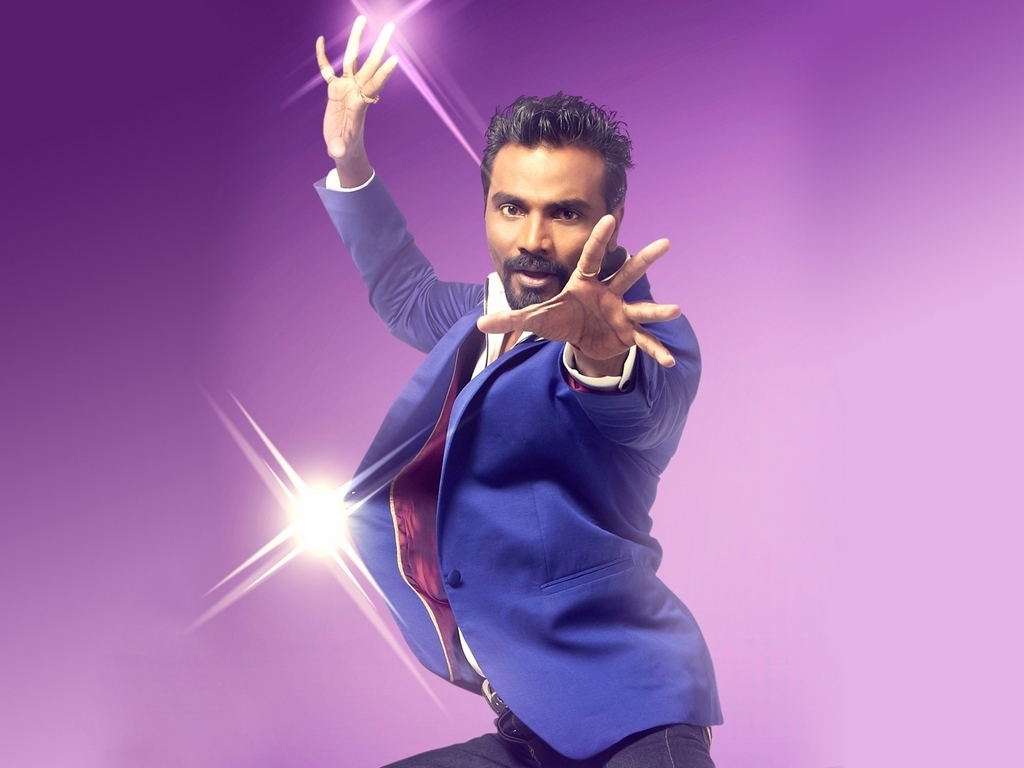Bollywood thrives on dance. Hindi cinema feels incomplete without fabulous dance sequences at regular intervals, nudging us to jump out of our seats and grin at the sheer grandiosity of it all. Songs are integral to the emotional fabric of these films; and choreographed dance steps only serve to enhance their mood and rhythms. Despite its importance, dance had always been a background element. It had always been present, but was seldom the main focus of the film. However, in the past few years, this subsidiary status has changed. Dance films and dance reality TV shows have become more common, and dancers have steadily gained celebrity status. This shift in perception can be credited to various reasons, one of the principal ones being Remo D’Souza.
Remo D’Souza is an Indian dancer, choreographer and director. He started his journey as a dancer in 1995. On account of his dark-coloured skin, he was subject to racism and rejected from many films. He found his first break as a background dancer in choreographer Ahmed Khan’s group in the film Rangeela. Later, he decided to venture into choreographing music videos. His choreography in Sonu Nigam’s “Deewana” in 1999 was very well received. Remo eventually changed paths and tried his hand at choreographing film videos. Here, director Anubhav Sinha’s Tum Bin was a major milestone for him. In 2009, he made his television debut as a judge on the show Dance India Dance (DID).
D’Souza’s extraordinary influence on the Indian dance scene stems from his stint on DID. As a judge on the show, he mentored various novice dancers like Dharmesh Yelande, Salman Yusuff Khan, Raghav Juyal, Prince Gupta and Punit Pathak who flourished under his guidance, and till date credit him for their success. Khan was the winner of DID, and appeared in the title song of Wanted. In 2013, he won Jhalak Dikhhla Jaa with dancer Drashti Dhami. In 2014, he was a participant of Fear Factor: Khatron Ke Khiladi 5. He was also a judge on the dance reality show Dance Dance Junior. A spin-off of DID called DID Li’l Masters aired in 2010. Dharmesh was a skipper on the show; and his mentee won. Both Juyal and Gupta were skippers on DID L’il Masters 2. Juyal stayed on as skipper for the show’s third season too. In 2015, D’Souza started appearing as the Super Judge on TV show Dance Plus. Dharmesh and Pathak are regular judges on the show; while Juyal has been the host since the show’s premiere. This is unprecedented — to achieve success through dance in such a short period of time; and managing to hold on to that glory. These shows and their contestants’ success have significantly altered the way people see ‘dance’, and established it as a non-queer career choice.
Through his films ABCD: AnyBody Can Dance, ABCD 2 and Street Dancer 3D, D’Souza has brought the genre of dance films into mainstream Bollywood. His cast is composed almost entirely of dancers, and besides his regular crew of Yelande, Khan, Juyal and Pathak, D’Souza also spotlights upcoming dancers through these films. Popular American dancer Lauren Gottlieb made her Bollywood debut in ABCD. Today, all these dancers are prominent names in India’s dance circuit. D’Souza has also contributed to the recent wave of novel dance forms in Hindi cinema. His film ABCD famously played around with almost 50 different dance forms like western contemporary, ballroom, pumping, hip-hop, kathak, Indian folk, semi-classical, local street dancing, etc.
The films in the ABCD franchise employ inspirational plots. I write “employ” because the major plot is always dance, and its interaction with different characters. The sub-plots within the dance films serve to enhance the exhilaration of witnessing that interaction. In ABCD: AnyBody Can Dance, Prabhudeva says, “Dance apne aap mein ek nasha hai. Jab yeh nasha ho, aur koi nasha nahin ho sakta!” (Dance is an addiction in and of itself. When this addiction is present, no other addiction can be entertained!) Here, sheer passion for dance is posited as the condition of an excellent dancer; and an excellent dancer is shown as a rich dancer. ABCD 2 structures itself upon the binary of ‘dance to express/dance to impress’. It tells the story of a dance crew who make their way to a hip-hop competition in Las Vegas. They do not win; but they successfully exhibit the impact of dance on one’s life. Street Dancer 3D utilises the binary of ‘dance for yourself/dance for others’. Here, the dancers earn money by winning a dance competition and use it to send struggling, South Asian immigrants back home. All these stories argue for dance’s positive influence on people; and also assert its place as a viable career and lifestyle in today’s India.
D’Souza’s persistence and creativity have shifted the way dance is perceived in India. For an art form which is utilised by the poor to facilitate class ascension; dancing used to be popularly dominated by the rich and the famous. D’Souza’s endeavours have collapsed this distinction. By foregrounding background dancers and allowing their skills to dominate the frame, his projects give artists a platform and highlight their versatility alongside the films’ heroes. In his films, while Varun Dhawan and Shraddha Kapoor are the clear protagonists; dancers Prabhu Deva and Lauren Gottlieb are never sidelined. Consequently, dancers and actors receive the same treatment and both are viewed as celebrities in their own right. Through various projects across his career, D’Souza has encouraged this shift; and thereby his lasting contributions to the Indian dance scene cannot be overstated.
Anushka Bidani is a 20 year old poet & essayist from India. She’s studying English literature at Ashoka University. You can find her at https://anushkabidani.com.
We publish all articles under a Creative Commons Attribution-Noderivatives license. This means any news organisation, blog, website, newspaper or newsletter can republish our pieces for free, provided they attribute the original source (OpenAxis).

